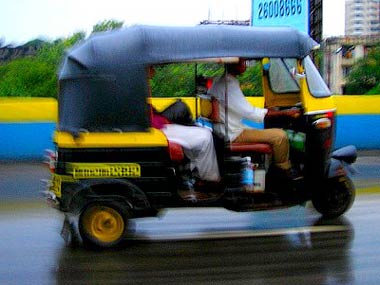The distance between the autorickshaw stand outside my apartment block and the point from where I take a bus is precisely 1.6 km. That is a distance I have often measured on my car’s odometer. While it falls well within the minimum amount, ie Rs 12, after which the meter should start ticking, I have never paid that amount. I always pay the Rs 15/16 charge of the ubiquitous tampered meter. The only time I’ve paid the right fare has been when I rode in an autorickshaw with an electronic meter. The majority of drivers, and the owners of these rickshaws, are averse to changing to an electronic meter. Here is why. One, fares. While the BEST changes bus fares without even as much as an announcement, some by over 100 percent, the auto authorities don’t change the fare rates. Their insurance to cope with the rising cost of living is the tampered meter. [caption id=“attachment_338251” align=“alignleft” width=“380” caption=“Image from Wikimedia”]  [/caption] Two, recovering bribes. An autorickshaw driver confided, after dropping/picking me up at Dindoshi and dropping me off at the National Park, (the fare was higher for this return trip than for the first by a substantial margin), “We fix the meters to show higher fares because we pay off the RTO staff for getting the vehicle ‘passed’” ‘Passed’ is the other word for certification of being roadworthy. The meter is tampered to recover that bribe, and tampered some more to cover the costs of dead runs, when they drop off a passenger and cruise empty till another waves them down. But yes, having recovered their outgo on the bribes, they keep it going because the next time around, the bribe is bigger. “Don’t shout only at us; you should talk to those officers who approve a tampered meter knowing it is,” he argued with me. And, it is hard to argue against this cycle of bribes and cheating. Add to this the daily outgoes on the hafta to the constable who just wants something because he needs to take something home, the economics simply don’t add up to survive the Rs 12 per 1.6 km fare structure. There is however another way of sorting this out and saving oneself from being trapped into paying the inflated fares. One, I ask the driver if the meter is fixed before I get into one. They shamefacedly say yes and drive off, especially when there are other competing rickshaw-users behind you. Two, if they arrive as I get off one where the stubborn but stoic-looking fellow does not give an inch, I tell the others who want to take it, “No, not this one. The meter is tampered, the inflation is outrageous. The rickshaw chap is dumbfounded and scoots off, one less passenger he could have cheated. Three, whenever I make a return trip, and if the traffic conditions are similar, I allow for a rupee’s difference, not more. Else, I just tell the driver that his meter is tampered with and would he accompany me to the police station in the same rickshaw. They often reduce the fare close to what was paid in the first trip. The onus is on him. Four, many a time the blunt outburst from me is simple: “This is thieving, and not acceptable. You guys are getting the same ill-reputation as a cop which must be dreadful.” Some respond, tacitly concede the mischief by charging a tad less. In all this, my confession is that my grey hair might be providing me some leverage. They argue only so much calling me ‘uncle’, but that is their weakness.
Interestingly, auto drivers have economic justifications for the tampered auto meter. There are however ways to make sure you don’t repeatedly get taken for a ride.
Advertisement
End of Article
Written by Mahesh Vijapurkar
Mahesh Vijapurkar likes to take a worm’s eye-view of issues – that is, from the common man’s perspective. He was a journalist with The Indian Express and then The Hindu and now potters around with human development and urban issues. see more


)
)
)
)
)
)
)
)
)



